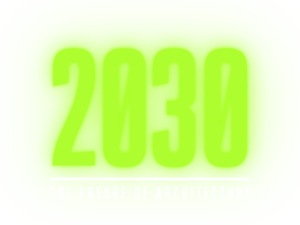
A FREE COURSE TO THE FOREFRONT OF ARCHITECTURE INNOVATION
A FUSION OF SUSTAINABLE DESIGN, HIGH-PERFORMANCE BUILDINGS, AND ARTIFICIAL INTELLIGENCE
JULY 8TH TO 12TH, 2024
ONLINE AND FREE EVENT
JULY 8TH TO 12TH, 2024
ONLINE AND FREE EVENT
By clicking the button, you agree to our Terms of Use and Privacy Policy, including the use of cookies and the sending of communications.
Introduction
Are you an architect, interior designer, or construction professional looking to impact the environment positively?
If so, eco-friendly concrete might be the solution you’ve been searching for. In this article, we will delve into the world of sustainable concrete, exploring its components, production process, benefits, and applications.
Discover how eco-friendly concrete revolutionizes the construction industry and why it is crucial for a greener future.
Understanding Sustainable Concrete
Traditional Concrete vs. Sustainable Concrete
Traditional concrete, composed mainly of cement, water, and aggregates, has long been the go-to building material for various construction projects. However, its production has a significant environmental impact.
Conversely, eco-friendly concrete is an eco-friendly alternative that incorporates environmentally responsible materials and processes throughout its production.
Environmental Impact of Traditional Concrete
Cement production is responsible for approximately 8% of global CO2 emissions. Moreover, extracting raw materials for concrete, such as sand and gravel, leads to land degradation and water pollution.
As a result, there is a growing need for sustainable alternatives that minimize the environmental footprint of the construction industry.


Components of Sustainable Concrete
Supplementary Cementitious Materials
Supplementary Cementitious Materials (SCMs) play a vital role in enhancing the sustainability of concrete. As partial replacements for cement in the concrete mix, SCMs significantly reduce the environmental impact of cement production. Some common SCMs include:
- Fly Ash: A byproduct of coal combustion in power plants, fly ash is known for improving the workability and durability of concrete. Using fly ash in concrete mixes, waste materials are repurposed, and the demand for cement is reduced.
- Ground Granulated Blast Furnace Slag (GGBFS): This byproduct from the iron and steel industry is obtained by rapidly cooling molten slag. GGBFS is known for enhancing concrete strength and durability while reducing permeability, making it an excellent choice for sustainable concrete.
- Silica Fume: A byproduct of silicon and ferrosilicon alloy production, silica fume is an ultra-fine powder that significantly improves concrete’s compressive strength and durability. Additionally, it reduces permeability, which helps protect against the penetration of harmful substances.
By incorporating SCMs into the concrete mix, less cement is required, reducing CO2 emissions and enhancing the overall performance of the concrete.
Recycled Aggregates
Recycled aggregates are obtained from construction and demolition waste, such as concrete, bricks, and tiles. Sustainable concrete utilizes these recycled materials to replace some of the natural aggregates in the mix. This approach has several benefits:
- Conservation of Natural Resources: Using recycled aggregates reduces the demand for virgin materials, conserving natural resources and minimizing the environmental impact of their extraction.
- Waste Reduction: Repurposing construction and demolition waste as recycled aggregates helps divert these materials from landfills, reducing waste and promoting a circular economy.
- Energy Savings: Recycling and reusing aggregates require less energy than extracting and processing virgin materials, reducing the overall energy consumption associated with concrete production.
Admixtures
Admixtures are substances added to the concrete mix to modify its properties, such as workability, strength, and durability. Some eco-friendly admixtures that can improve the sustainability of concrete include:
- Water-Reducing Agents: These admixtures reduce water content without affecting the workability of the concrete. As a result, less cement is needed, decreasing the environmental impact of the mix.
- Air-Entraining Agents: By introducing tiny, evenly distributed air bubbles into the concrete mix, air-entraining agents improve the concrete’s freeze-thaw resistance and durability. This can lead to longer-lasting concrete structures and reduced maintenance requirements.
- Pozzolanic Admixtures: These materials, such as natural pozzolans or rice husk ash, react with the calcium hydroxide produced during cement hydration to form additional cementitious compounds. This results in improved strength and durability, as well as reduced permeability.
Using eco-friendly admixtures, sustainable concrete mixes can be optimized to minimize cement content without compromising the final product’s performance.
Production Process of Sustainable Concrete
Reducing CO2 Emissions
Minimizing CO2 emissions is a top priority in sustainable concrete production. To achieve this, several strategies can be implemented throughout the production process:
- Utilizing SCMs: Replacing a portion of cement with SCMs, such as fly ash, GGBFS, and silica fume, can significantly reduce the CO2 emissions associated with cement production.
- Incorporating Recycled Aggregates: Using recycled aggregates in the concrete mix decreases the demand for virgin materials, reducing energy consumption and CO2 emissions linked to raw material extraction and processing.
- Employing Eco-Friendly Admixtures: Some admixtures can reduce the amount of cement needed in the mix, further minimizing CO2 emissions.
- Innovative Production Techniques: Advanced production methods, such as carbon capture and storage, can help mitigate CO2 emissions during cement manufacturing. This technology captures CO2 generated during the process and stores it underground, preventing its release into the atmosphere.
Efficient Use of Resources
Optimizing resource usage is a critical aspect of sustainable concrete production. The construction industry can significantly reduce its environmental footprint by incorporating recycled materials and minimizing waste generation.
Critical strategies for efficient resource use include:
- Sourcing Locally: Using locally available materials minimizes transportation-related emissions and supports local economies.
- Optimizing Mix Designs: Adjusting concrete mix designs to use the least amount of virgin materials without compromising performance can help conserve natural resources and reduce energy consumption.
- Leveraging Industrial Byproducts: Utilizing byproducts from other industries, such as SCMs and recycled aggregates, promotes resource efficiency and a circular economy.
Minimizing Waste
Reducing waste throughout the production process is essential for sustainable concrete. Implementing efficient resource utilization, recycling, and waste reduction strategies can significantly mitigate the environmental impact of concrete production. Some effective waste minimization approaches include:
- Lean Manufacturing: Adopting lean manufacturing principles can help identify and eliminate waste in the production process, resulting in more efficient operations and reduced environmental impact.
- Just-in-Time (JIT) Production: Implementing JIT production ensures materials are delivered to the construction site only when needed, reducing storage requirements and the potential for waste generation.
- Recycling and Reusing: Encouraging the recycling and reuse of construction and demolition waste and industrial byproducts can help divert these materials from landfills and reduce the demand for virgin resources.
By incorporating these strategies into the production process, sustainable concrete can help create a more environmentally responsible construction industry.
Benefits of Sustainable Concrete
Sustainable concrete offers numerous advantages across environmental, economic, and social aspects. These benefits collectively contribute to a more sustainable and responsible construction industry.
Environmental Benefits of Sustainable Concrete
Eco-friendly concrete helps create a healthier environment through various means:
- Reduced CO2 Emissions: By utilizing SCMs, recycled aggregates, and eco-friendly admixtures, sustainable concrete can significantly reduce CO2 emissions associated with traditional concrete production.
- Conservation of Natural Resources: Incorporating recycled materials and efficient use of resources in sustainable concrete production helps conserve natural resources and minimize the environmental impact of raw material extraction.
- Minimized Waste: Eco-friendly concrete production prioritizes waste reduction strategies, minimizing waste generation and landfill usage.
- Reduced Land Degradation and Water Pollution: Sustainable concrete practices can help mitigate the adverse effects associated with traditional concrete production, such as land degradation and water pollution, by promoting recycling construction waste and efficient resource management.
Economic Benefits of Sustainable Concrete
Sustainable concrete offers several economic advantages:
- Long-Term Cost Savings: The enhanced durability and reduced maintenance requirements of sustainable concrete lead to long-term cost savings for building owners and operators.
- Resource Efficiency: Efficient resource use and waste reduction strategies can result in significant savings throughout the construction process, reducing overall project costs.
- Resilient Infrastructure: Eco-friendly concrete’s durability and resistance to harsh environments can help create more resilient infrastructure, reducing the need for costly repairs and replacements in the future.
Social Benefits of Sustainable Concrete
Eco-friendly concrete also provides social benefits, such as:
- Support for Local Economies: By promoting using locally-sourced materials, sustainable concrete can support local economies and create jobs in the construction, recycling, and waste management sectors.
- Healthier Communities: Eco-friendly concrete contributes to healthier and more sustainable communities by reducing pollution, promoting eco-conscious building practices, and encouraging green urban development.
- Enhanced Quality of Life: Sustainable concrete can improve the quality of life for occupants of residential and commercial buildings through better indoor air quality, temperature regulation, and overall comfort.
Architects, interior designers, and construction companies can make informed decisions that contribute to a more sustainable and responsible construction industry by considering the numerous benefits of sustainable concrete.




A FREE COURSE TO THE FOREFRONT OF ARCHITECTURE INNOVATION
A FUSION OF SUSTAINABLE DESIGN, HIGH-PERFORMANCE BUILDINGS, AND ARTIFICIAL INTELLIGENCE
JULY 8TH TO 12TH, 2024
ONLINE AND FREE EVENT
JULY 8TH TO 12TH, 2024
ONLINE AND FREE EVENT
By clicking the button, you agree to our Terms of Use and Privacy Policy, including the use of cookies and the sending of communications.
Applications of Sustainable Concrete
Sustainable concrete is a versatile material that can be employed in various applications across the construction industry. Its eco-friendly nature, durability, and low-maintenance requirements make it an ideal choice for numerous projects. Some examples of applications include:
Green Building Projects
Sustainable concrete is well-suited for green building projects emphasizing energy efficiency, environmental responsibility, and occupant well-being. Examples of green building applications for sustainable concrete include:
- Foundations and Structural Systems: Eco-friendly concrete can be used to construct foundations and structural systems, offering strength and durability while minimizing environmental impact.
- Thermal Mass: The inherent thermal mass of sustainable concrete can contribute to the energy efficiency of a building by regulating indoor temperatures and reducing the need for heating and cooling systems.
- Green Roofs and Walls: Eco-friendly concrete can be used to construct green roofs and living walls, which help improve air quality, reduce energy consumption, and promote biodiversity.
Infrastructure Projects
Sustainable concrete is ideal for infrastructure projects that demand durable and low-maintenance materials. Some examples of infrastructure applications include:
- Bridges: The use of sustainable concrete in bridge construction can result in structures with enhanced durability and reduced maintenance requirements, leading to long-term cost savings.
- Highways and Roadways: Sustainable concrete can be used to construct highways and roadways, offering a long-lasting and eco-friendly alternative to traditional materials.
- Water and Wastewater Treatment Facilities: Sustainable concrete’s durability and resistance to harsh environments make it suitable for constructing water and wastewater treatment facilities.
Urban Development Initiatives
Urban development projects prioritizing sustainability and environmental stewardship can also benefit from using sustainable concrete. Examples of urban development applications include:
- Urban Heat Island Reduction: Eco-friendly concrete with lighter-colored surfaces can help mitigate the urban heat island effect by reflecting more sunlight and reducing surface temperatures.
- Stormwater Management: Permeable concrete, a type of sustainable concrete, allows water to pass through its porous structure, facilitating stormwater management and reducing the risk of flooding in urban areas.
- Public Spaces and Landscaping: Eco-friendly concrete can be employed in constructing public spaces and landscaping elements, such as benches, planters, and retaining walls, promoting green and eco-friendly urban environments.
By incorporating sustainable concrete in various applications, architects, interior designers, and construction professionals can contribute to developing more environmentally responsible and sustainable communities.


Challenges and Future Developments For Sustainable Concrete
Despite the numerous advantages of sustainable concrete, several challenges must be overcome to encourage its widespread adoption. These challenges include:
Initial Higher Costs
Eco-friendly concrete materials and production techniques sometimes come with higher initial costs than traditional concrete. This can make it challenging for some construction projects to justify the investment. However, it is essential to consider the long-term benefits of sustainable concrete, such as reduced maintenance costs, energy savings, and environmental advantages.
Lack of Awareness and Education
Many industry professionals may be unfamiliar with the benefits and applications of sustainable concrete. As a result, there is a need for increased education and awareness among architects, interior designers, and construction companies. This can be achieved through training programs, workshops, and the promotion of successful case studies showcasing the advantages of eco-friendly concrete.
Future Developments in Sustainable Concrete Production
As the demand for sustainable construction materials continues to grow, future developments in eco-friendly concrete production will likely focus on the following:
- Improving the Performance of Eco-Friendly Materials: Research and development efforts will aim to enhance the properties of sustainable concrete, such as strength, durability, and workability, to meet or exceed the performance of traditional concrete materials.
- Developing Innovative Production Techniques: New production methods and technologies, such as carbon capture and storage, will be explored to reduce the environmental impact of concrete production further.
- Exploring New Applications: As the versatility of eco-friendly concrete is further recognized, new applications will emerge, opening up additional opportunities for its use in various construction projects.
By addressing these challenges and focusing on future developments, the construction industry can work towards a more sustainable future, with sustainable concrete playing a critical role in achieving this goal.
Sustainable Concrete: Conclusion
Eco-friendly concrete is an eco-friendly alternative to traditional concrete, offering numerous environmental, economic, and social benefits. By incorporating sustainable materials and production processes, the construction industry can significantly reduce its environmental impact and contribute to a greener future.
As architects, interior designers, and construction professionals, we are responsible for promoting and implementing sustainable building practices for a better world.
Now that you have a deeper understanding of sustainable concrete, we invite you to discover UGREEN certification. UGREEN is an innovative early-design process certification that inspires mindful creativity and sustainable designs from the first draft.
FAQs
Q1: What is the main difference between traditional and sustainable concrete?
A1: The main difference lies in the materials and production processes. Sustainable concrete incorporates eco-friendly materials, such as SCMs and recycled aggregates, and utilizes processes that minimize CO2 emissions, waste, and resource consumption.
Q2: Can sustainable concrete be used for all types of construction projects?
A2: Eco-friendly concrete is versatile and can be used in various applications, including residential and commercial buildings, infrastructure projects, and urban development initiatives.
Q3: What are some common supplementary cementitious materials (SCMs)?
A3: Some common SCMs include fly ash, ground granulated blast furnace slag, and silica fume. These materials partially replace cement in the concrete mix, reducing its environmental impact.
Q4: How does sustainable concrete contribute to cost savings?
A4: Eco-friendly concrete offers long-term cost savings due to its enhanced durability and reduced maintenance requirements. Moreover, efficient resource utilization and waste reduction strategies can result in savings throughout construction.
Q5: What can be done to overcome the challenges associated with sustainable concrete?
A5: To overcome challenges such as higher initial costs and lack of awareness, industry professionals can advocate for government incentives, invest in research and development, and promote education on the benefits of eco-friendly concrete. Collaboration among stakeholders, including architects, designers, construction companies, and policymakers, is essential for driving the widespread adoption of sustainable concrete in the construction industry.




A FREE COURSE TO THE FOREFRONT OF ARCHITECTURE INNOVATION
A FUSION OF SUSTAINABLE DESIGN, HIGH-PERFORMANCE BUILDINGS, AND ARTIFICIAL INTELLIGENCE
JULY 8TH TO 12TH, 2024
ONLINE AND FREE EVENT
JULY 8TH TO 12TH, 2024
ONLINE AND FREE EVENT
By clicking the button, you agree to our Terms of Use and Privacy Policy, including the use of cookies and the sending of communications.
If you need our services in the Portuguese language, click here.
